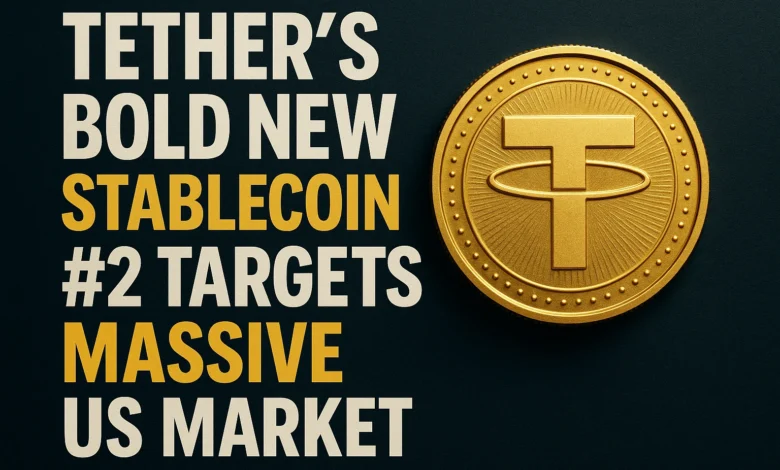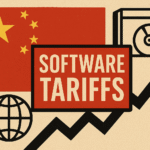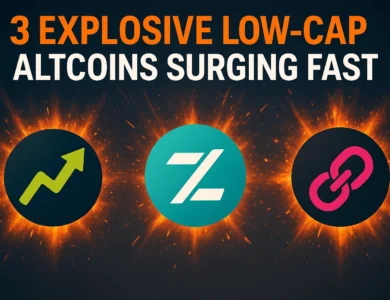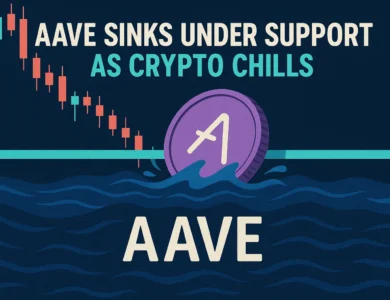
The cryptocurrency landscape is witnessing a groundbreaking development as Tether, the world’s largest stablecoin issuer, announces its ambitious plan to launch a second stablecoin specifically designed for the US market. This strategic move represents a pivotal moment in the evolution of digital currencies and signals Tether’s commitment to expanding its dominance in the rapidly growing American cryptocurrency ecosystem.
For years, Tether’s USDT has maintained its position as the most widely used stablecoin globally, with a market capitalization exceeding billions of dollars. However, the company’s decision to introduce a new stablecoin tailored for US investors and institutions demonstrates a calculated response to increasing regulatory scrutiny and the massive untapped potential within American financial markets. This development comes at a crucial time when digital asset adoption is accelerating, traditional financial institutions are embracing blockchain technology, and regulatory frameworks are becoming more defined.
The launch of this second stablecoin isn’t merely about expanding Tether’s product portfolio—it represents a fundamental shift in how the company approaches compliance, market segmentation, and strategic positioning within the world’s largest economy. As the cryptocurrency market matures and institutional adoption grows, Tether’s bold initiative could reshape the competitive landscape and set new standards for stablecoin operations in heavily regulated markets.
Understanding Tether’s Market Dominance
The Rise of USDT
Tether’s flagship product, USDT, has become synonymous with stablecoin trading across global cryptocurrency exchanges. Since its inception, USDT has facilitated trillions of dollars in trading volume, serving as the primary bridge between fiat currencies and digital assets. The stablecoin’s widespread adoption stems from its liquidity, availability across multiple blockchain networks, and its role as a safe haven during volatile crypto market conditions.
The success of USDT has established Tether as an indispensable infrastructure provider within the cryptocurrency ecosystem. Traders, investors, and institutions rely on Tether’s stablecoin for everything from arbitrage opportunities to cross-border transactions and portfolio management. This market dominance has positioned the company to leverage its expertise and reputation in launching complementary products.
Why a Second Stablecoin Matters
The introduction of a new stablecoin specifically for the US market addresses several strategic imperatives. First, it demonstrates Tether’s commitment to regulatory compliance in a jurisdiction where scrutiny of digital currencies has intensified. Second, it allows the company to tailor features, reserve structures, and operational frameworks to meet American regulatory expectations without disrupting its existing global operations.
This segmentation strategy enables Tether to serve different market needs simultaneously—maintaining USDT’s global reach while offering a US-focused alternative that meets domestic regulatory standards. For American investors and institutions, this new stablecoin could provide enhanced confidence through transparent reserves, regular audits, and compliance with US financial regulations.
The US Market Opportunity
Massive Growth Potential
The US cryptocurrency market represents an enormous opportunity for stablecoin issuers. With millions of active crypto investors, thousands of blockchain companies, and increasing institutional participation, the demand for reliable digital currency infrastructure continues to surge. American crypto exchanges process billions in daily trading volume, and stablecoins facilitate a significant portion of these transactions.
Market analysts project that stablecoin adoption in the United States could reach unprecedented levels as regulatory clarity improves and more traditional financial institutions enter the space. The potential for Tether’s new stablecoin to capture market share in payment processing, remittances, DeFi applications, and institutional treasury management is substantial.
Regulatory Landscape
The US regulatory environment for cryptocurrencies and stablecoins has evolved considerably, with agencies like the SEC, CFTC, and Treasury Department establishing clearer guidelines. Recent legislative proposals specifically addressing stablecoin regulation have created both challenges and opportunities for issuers willing to meet stringent compliance requirements.
Tether’s decision to launch a dedicated US stablecoin suggests the company is prepared to navigate this complex regulatory terrain. By creating a separate product, Tether can implement reserve requirements, disclosure standards, and operational practices that align with American regulatory expectations while maintaining flexibility in other jurisdictions.
Key Features of Tether’s New Stablecoin
Enhanced Transparency and Reserves
One of the most critical aspects of Tether’s new stablecoin will likely be its approach to transparency and reserve management. Learning from past controversies and responding to regulatory demands, the US-focused stablecoin is expected to maintain reserves with increased disclosure, potentially including regular third-party audits and real-time attestations.
The reserve composition may feature US Treasury securities, cash equivalents, and other highly liquid assets that meet regulatory standards. This conservative approach to backing would differentiate the new stablecoin from competitors and address concerns that have historically surrounded Tether’s reserve practices.
Regulatory Compliance Framework
The new stablecoin will presumably operate under a comprehensive compliance framework designed specifically for the US market. This could include registration with appropriate regulatory bodies, implementation of robust anti-money laundering (AML) and know-your-customer (KYC) procedures, and adherence to state-level money transmission laws.
By prioritizing compliance from inception, Tether positions its new stablecoin as a viable option for risk-averse institutions, traditional financial entities exploring digital assets, and retail investors seeking regulated cryptocurrency products.
Technology and Integration
The technological infrastructure supporting Tether’s second stablecoin will be crucial to its success. The digital currency will likely be available on multiple blockchain networks to ensure compatibility with existing crypto infrastructure while potentially incorporating new features that enhance usability, programmability, and interoperability.
Integration with major US cryptocurrency exchanges, DeFi protocols, payment processors, and financial platforms will determine the stablecoin’s utility and adoption rate. Tether’s existing relationships and technical expertise provide significant advantages in achieving widespread integration quickly.
Competitive Landscape
Existing US Stablecoin Players
Tether’s new stablecoin will enter a competitive market already populated by established players like USD Coin (USDC), Paxos Standard (PAX), and others that have specifically targeted US regulatory compliance. These competitors have built reputations around transparency, regular attestations, and regulatory cooperation.
However, Tether brings unmatched experience in stablecoin operations, global market presence, and deep liquidity pools that could provide competitive advantages. The company’s brand recognition and existing partnerships position its US market entry as a potentially disruptive force.
Market Differentiation Strategy
To succeed in the crowded stablecoin market, Tether must articulate clear value propositions for its new digital currency. This could include superior liquidity incentives, lower transaction costs, enhanced programmability features, or unique partnerships that expand use cases beyond simple value transfer.
The differentiation strategy will also need to address institutional concerns about stability, redemption mechanisms, and regulatory standing—areas where Tether has faced criticism historically but can now demonstrate improvement through its new stablecoin design.
Implications for Investors and the Crypto Market
Impact on Trading and Liquidity
The introduction of another major Tether stablecoin could significantly impact cryptocurrency trading dynamics in the US market. Additional liquidity from a trusted issuer could reduce trading friction, improve price discovery, and provide more options for traders managing portfolio risk.
For crypto investors, the new stablecoin represents another tool for preserving value during market volatility, moving funds between exchanges, and participating in DeFi opportunities with potentially enhanced regulatory protection.
Institutional Adoption Potential
Perhaps the most significant implication of Tether’s US-focused stablecoin is its potential to accelerate institutional adoption of digital assets. Banks, asset managers, and corporations that have been hesitant to engage with cryptocurrencies due to regulatory concerns may find a compliant, transparently managed stablecoin more acceptable for treasury operations, payment processing, and blockchain-based applications.
This institutional embrace could legitimize stablecoins as essential financial infrastructure and drive broader cryptocurrency market growth.
Challenges and Considerations
Trust and Reputation Management
Tether has faced skepticism throughout its history regarding reserve transparency and regulatory compliance. Launching a new stablecoin in the scrutinized US market requires the company to rebuild trust through demonstrable commitment to transparency, regular audits, and proactive regulatory engagement.
The success of this new digital currency will depend significantly on Tether’s ability to address historical concerns and establish credibility with American investors, regulators, and institutions.
Regulatory Hurdles
Despite increasing clarity, the US market regulatory environment for stablecoins remains complex and evolving. Tether must navigate federal and state-level requirements, potentially secure necessary licenses, and maintain ongoing compliance as regulations continue to develop.
Failure to meet regulatory expectations could result in enforcement actions, restricted operations, or damage to the stablecoin’s reputation—risks that Tether must carefully manage.
Market Competition and Adoption
Convincing users to adopt a new stablecoin when established alternatives already exist presents significant challenges. Tether will need to provide compelling incentives, ensure seamless integration with existing platforms, and deliver tangible benefits that justify switching from or supplementing other stablecoin options.
Conclusion
Tether’s bold decision to launch a second stablecoin targeting the massive US market represents a watershed moment for the company and the broader cryptocurrency industry. This strategic initiative demonstrates Tether’s recognition of America’s critical role in the global digital asset ecosystem and its willingness to adapt to regulatory realities while pursuing growth opportunities.
The new stablecoin could reshape competitive dynamics, accelerate institutional adoption, and establish new standards for regulatory compliance in the crypto market. However, success will require Tether to overcome historical trust deficits, navigate complex regulatory requirements, and deliver compelling value propositions to users already served by existing alternatives.
As the cryptocurrency landscape continues evolving, Tether’s expansion into the US market with a dedicated stablecoin will be closely watched by investors, competitors, and regulators alike. The outcome could influence not only Tether’s future but also the trajectory of stablecoin adoption and digital currency innovation in the world’s largest economy.
Read More: 3 Explosive Low-Cap Altcoins Surging Fast





